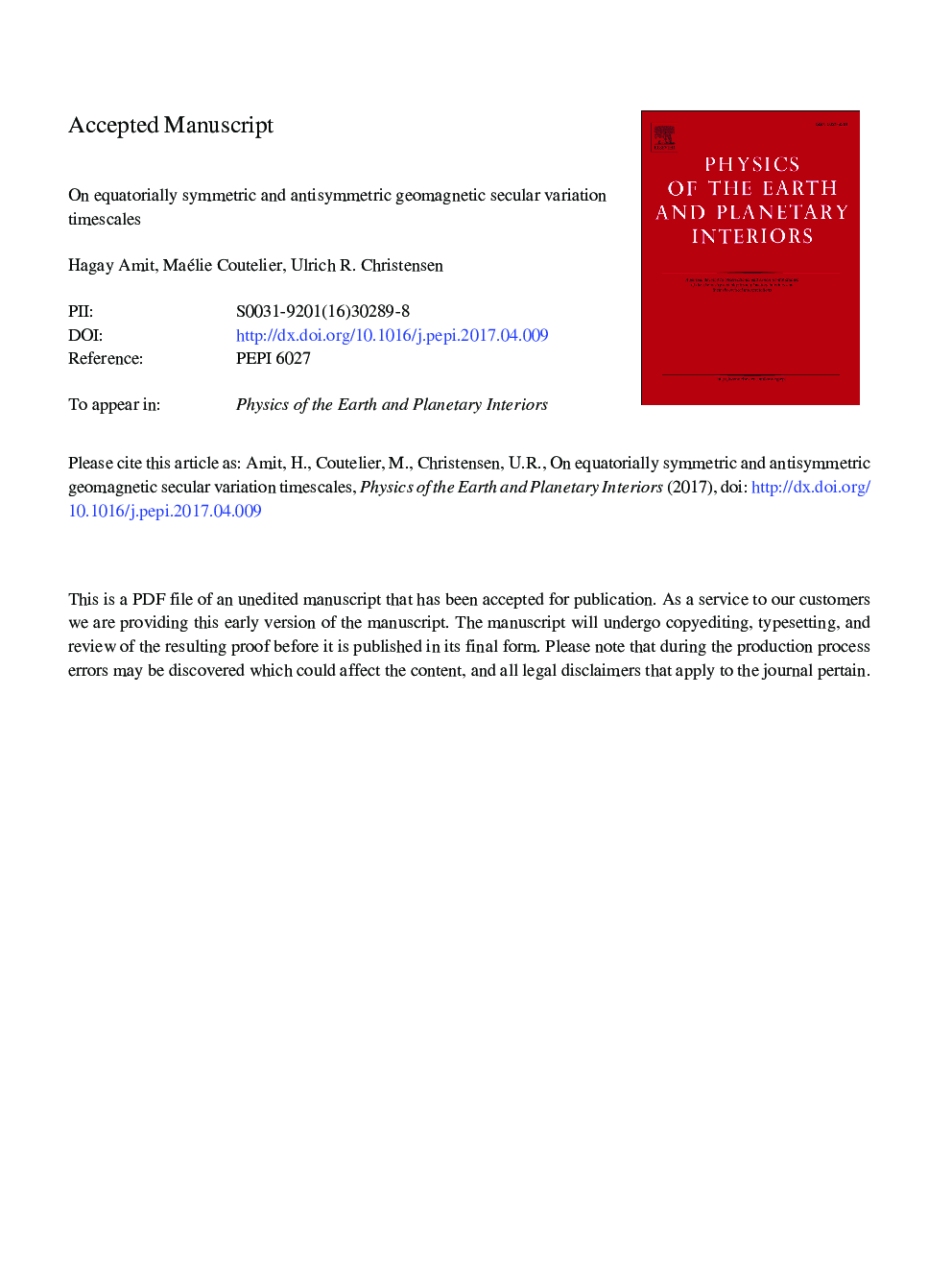| Article ID | Journal | Published Year | Pages | File Type |
|---|---|---|---|---|
| 8915732 | Physics of the Earth and Planetary Interiors | 2018 | 30 Pages |
Abstract
It has been suggested that the secular variation (SV) timescales of the geomagnetic field vary as 1/â (where â is the spherical harmonic degree), except for the dipole. Here we propose that the same scaling law applies for SV timescales defined for different symmetry classes of the geomagnetic field and SV. We decompose the field and its SV into symmetric and antisymmetric parts and show in geomagnetic field models and numerical dynamo simulations that the corresponding SV timescales also vary as 1/â, again except for the dipole. The time-average antisymmetric/symmetric SV timescales are larger/smaller than the total, respectively. The difference in SV timescales between these two symmetry classes is probably due to different degrees of alignment of the core flow with different magnetic field structures at the core-mantle boundary. The symmetric dipole SV timescale in the recent geomagnetic field and in long-term time-averages from numerical dynamos is below the extrapolated 1/â curve, whereas before â¼1965 the geomagnetic dipole tilt was rather steady and the symmetric dipole SV timescale exceeded the extrapolated 1/â curve. We hypothesize that the period of nearly steady geomagnetic dipole tilt between 1810-1965 was anomalous for the geodynamo. Overall, the deviation of the dipole SV timescales from the 1/â curves may indicate that magnetic diffusion contributes to the dipole SV more than it does for higher degrees.
Related Topics
Physical Sciences and Engineering
Earth and Planetary Sciences
Geophysics
Authors
Hagay Amit, Maélie Coutelier, Ulrich R. Christensen,
